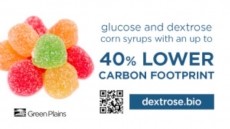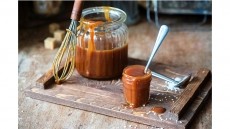Novel foods opinion brings baobab closer to market
for use as a food ingredient in the EU yesterday, with the
publication of a positive opinion from the FSA's novel foods
committee.
Baobab is the large green or brown fruit of the Adansonia digitata, (or 'upside-down') tree, which grows primarily in southern Africa. It has a long history of traditional use in Africa, but has not been commonly consumed in the EU prior to May 1997, meaning that approval must be gained under novel foods legislation before it can be used in products for the European market. The wheels were set in motion last year by PhytoTrade Africa, the southern Africa natural products trade association that represents companies wishing to export their dried baobab fruit, which submitted an application to the UK's Food Standards Agency last year. PhytoTrade Africa intends that the pulp of the fruit be used in a range of food products such as smoothies and cereal bars at a level of between five and 15 per cent. De-pectinised fruit pulp could also be used as an ingredient in other products, like biscuits and confectionery. In its draft opinion published yesterday, the Advisory Committee on Novel Foods and Processes (ACNFP), published said it is satisfied that the evidence to support the use of baobab dried fruit pulp is acceptable, subject to certain specifications and parameters. While most novel food applications include toxicological analyses, these were excluded from the baobab submission. However the committee said it was reassured that the ingredient is a simple fruit preparation that has long formed as traditional part of the diet in large swathes of Africa. One particular concern, however, was the level of yeast and mould contamination that the ingredient was found to contain. While such levels were found to be in line with those of similar dried products, the committee said that mycotoxin contamination was of particular concern. But PhytoTrade Africa said that additional analyses had been carried out that indicated aflatoxin levels were in line with EU limits, which provided reassurance. Moreover, the organisation said it would carry out routine quality control tests to ensure that aflatoxin levels remain demonstrably low. In addition, PhytoTrade Africa's members accepted that the product would be appropriately labelled, informing consumers of the presence of baobab. Exotic fruits have enjoyed a surge of popularity in Europe - especially those that can claim to be 'superfruits'. Fruits including acai, pomegranate and cranberry are increasingly being used in cereal bars and beverages, where they are associated with a better health profile thanks to growing awareness of the fruits' nutritional profile. The fruit pulp of the baobab is said to have an antioxidant activity about four times that of kiwi or apple pulp. The main nutrients include vitamin C, riboflavin, niacin, pectin and citric, malic and succinic acids, while the oil also contains the vitamins A, D and E. The pulp is also reported to be prebiotic and stimulate the intestinal microflora. If successful, the application will further underline the growing popularity of exotic ingredients derived from Africa. The ACNFP is accepting comments on its draft opinion until June 20.











